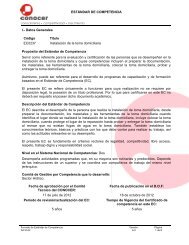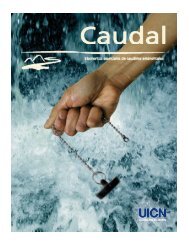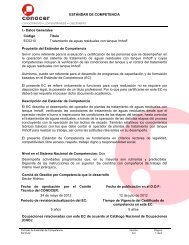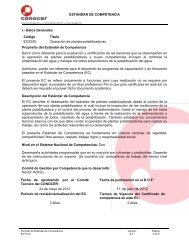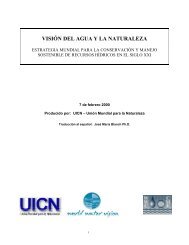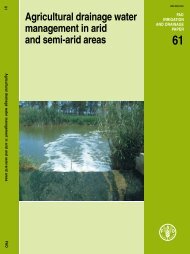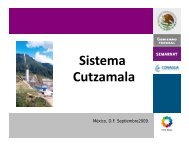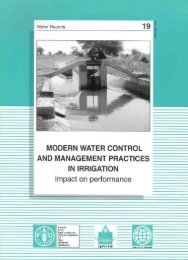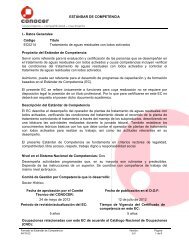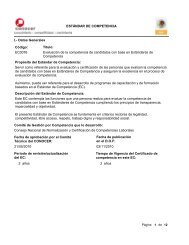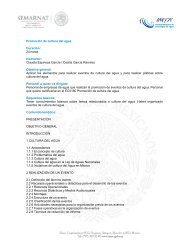An Assessment of the Status of Biodiversity in the ... - IUCN
An Assessment of the Status of Biodiversity in the ... - IUCN
An Assessment of the Status of Biodiversity in the ... - IUCN
You also want an ePaper? Increase the reach of your titles
YUMPU automatically turns print PDFs into web optimized ePapers that Google loves.
from <strong>the</strong>se mammals, a few species <strong>of</strong> <strong>in</strong>sectivorous bats (micro-chiroptera) and shrews werefrequently observed.Species composition and relative abundance <strong>of</strong> selected <strong>in</strong>vertebrate faunaOnly two groups <strong>of</strong> <strong>in</strong>vertebrates - butterflies and molluscs were surveyed and <strong>the</strong> number <strong>of</strong>species recorded is presented <strong>in</strong> Table 5. Approximately 20% <strong>of</strong> <strong>the</strong> butterfly species <strong>of</strong> SriLanka were recorded from Maduganga (Appendix 8). These ranged from <strong>the</strong> small lycaenidspecies to <strong>the</strong> large swallowtail species. However, not a s<strong>in</strong>gle endemic butterfly species wasobserved. About 10% <strong>of</strong> <strong>the</strong> butterfly species <strong>in</strong> Maduganga are threatened.The molluscs recorded <strong>in</strong>clude 14 land snails (Appendix 9) and 11 brackish water species(Appendix 10). Approximately 60% <strong>of</strong> <strong>the</strong> land snails <strong>in</strong> Maduganga (ma<strong>in</strong>land and islands)are endemic and threatened as well. Among <strong>the</strong> land snail species, two are <strong>in</strong>vasive alienspecies (Giant African Snail - Achat<strong>in</strong>a fulica and Slug - Laevicaulis alte). The endemicGlessula paneantha is a highly threatened land snail. In addition, <strong>the</strong> endemic Acavushaemastoma - a relict species that depicts Gondwanaland fauna is also present <strong>in</strong> some <strong>of</strong> <strong>the</strong>islands and ma<strong>in</strong>land areas <strong>of</strong> Maduganga. The most common molluscs <strong>in</strong> mangrove habitats<strong>in</strong>cluded Telescopium telescopium, Ceri<strong>the</strong>dia c<strong>in</strong>gulata, and Nerita polita.The most common crustacean species recorded <strong>in</strong> <strong>the</strong> Maduganga estuary <strong>in</strong>clude <strong>the</strong> MudCrab (Scylla serrata), Grapsid Crabs (Chiromantes spp.), <strong>the</strong> Mud Lobster (Thalass<strong>in</strong>aanomala) and <strong>the</strong> White Prawn (Penaeus <strong>in</strong>dicus).Table 5A comparison <strong>of</strong> butterflies and molluscs <strong>in</strong> Sri Lanka and MadugangaGroup Sri Lanka MadugangaButterflies 243 (20E, 76T) 50 (5T)Terrestrial molluscs 235 (198E, 116T) 14 (8E,8T)Aquatic molluscs (Brackish Water) Unknown 11E - Endemic, T - Threatened (<strong>IUCN</strong> Sri Lanka, 2000).13



